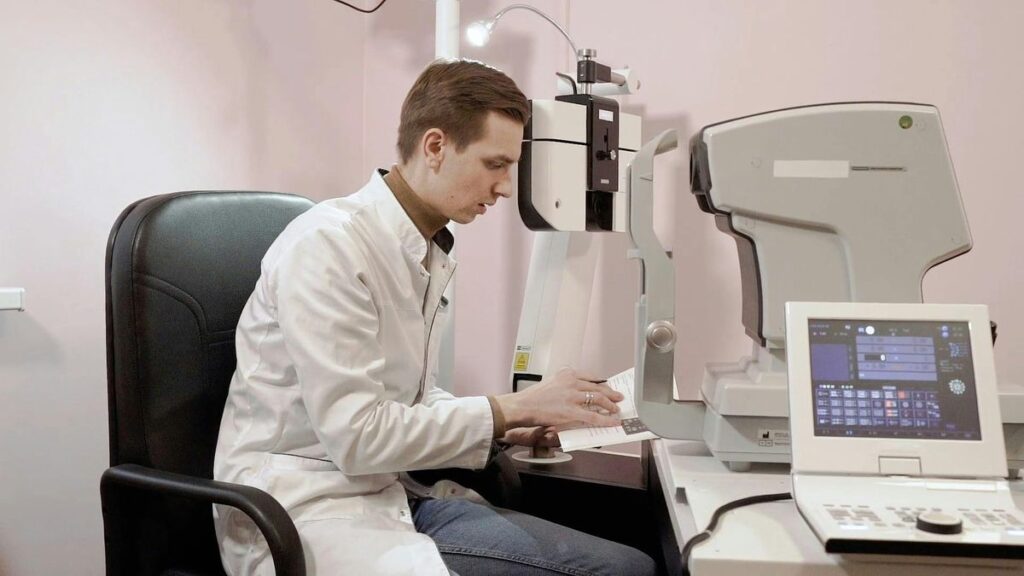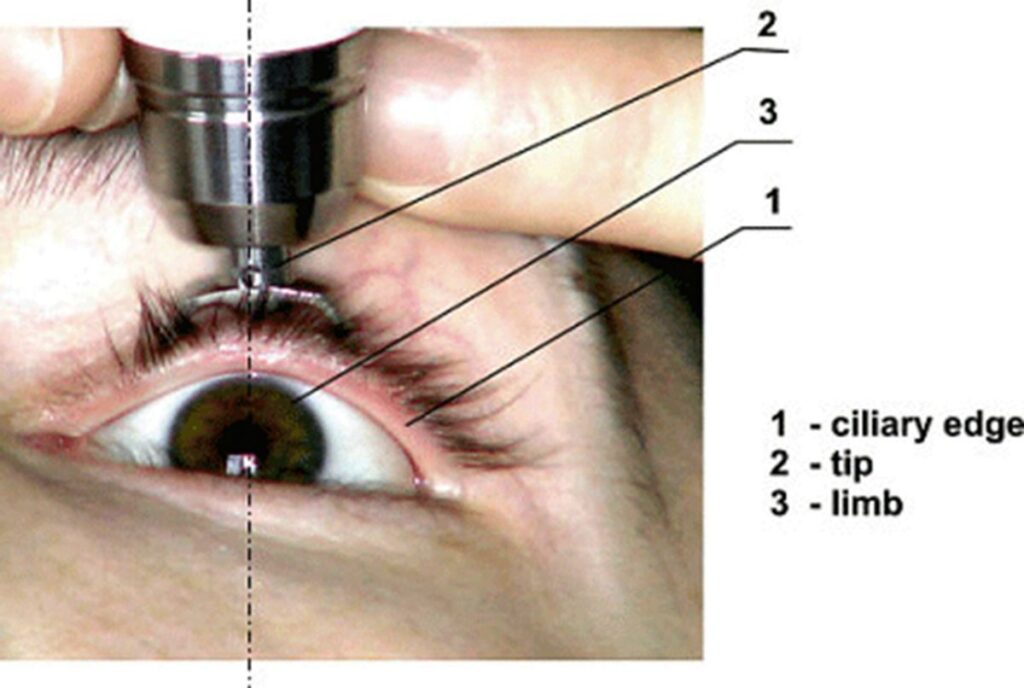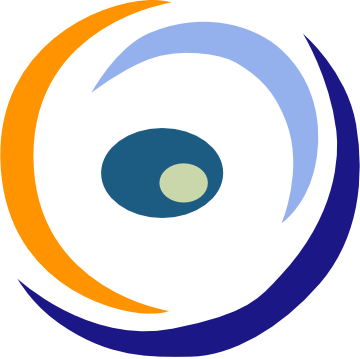In the realm of optometry, software solutions are playing a transformative role in enhancing the management and delivery of eye care services. From the evolution of ophthalmic devices to the integration of telemedicine, the industry is witnessing a paradigm shift that promises improved efficiency, accessibility, and patient outcomes. This article delves into the various facets of this revolution, highlighting the innovative technologies and practices that are redefining vision care.
Key Takeaways
- The rapid innovation in ophthalmic devices, diagnostics, and surgical equipment is propelling the eye care industry forward, leading to better patient outcomes.
- PracticePal exemplifies how software solutions can streamline optometry practices by automating processes and enhancing the patient experience, ultimately boosting efficiency and profitability.
- Online eyesight testing is surmounting traditional barriers to eye care, offering convenient, expert-vetted tests that can be taken from home, expanding the role of telemedicine.
- Key industry players such as Johnson & Johnson Vision and Lumenis are at the forefront of eye care management innovation, fostering collaborations and driving research for patient-centric solutions.
- The complexities of insurance information and eyewear purchasing are being addressed through technological advancements, improving the patient experience and benefits collection.
The Evolution of Eye Care Technology

Breakthroughs in Ophthalmic Devices
The landscape of ophthalmic devices is experiencing a surge of innovation, with new technologies emerging that are reshaping the way eye disorders are diagnosed and treated. These advancements are not only enhancing the precision and effectiveness of eye care but also improving the overall quality of life for patients. The market for these devices is on an upward trajectory, driven by an increase in eye-related conditions, especially among the aging population.
Innovative eyeglasses technology solutions are improving vision and comfort, marking a significant shift in the industry. Digital, wearable, and smart lens innovations are at the forefront of this revolution, offering patients a better quality of life through enhanced eye care. The following list highlights some of the key developments in this area:
- Digital imaging and diagnostic tools for early detection of eye diseases
- Wearable technology integrating health monitoring and vision correction
- Smart lenses that adjust focus and offer augmented reality features
The impact of these breakthroughs is profound, with a clear trend towards more patient-centric solutions. As research continues to push the boundaries of what’s possible, the future of ophthalmic devices looks brighter than ever.
Advancements in Diagnostic and Surgical Equipment
The ophthalmic devices, diagnostics, and surgical equipment market is experiencing a significant transformation. Innovations in this sector are enhancing the precision and effectiveness of eye disorder treatments, leading to improved patient outcomes. The market is witnessing a surge in demand, driven by an increase in eye conditions, especially among the aging population.
Key advancements include:
- Phacoemulsification systems for cataract surgery
- Vitreoretinal surgical instruments for retinal disorders
- Enhanced imaging technologies for accurate diagnostics
The integration of these advanced technologies into clinical practice is setting new standards for eye care, ensuring that patients receive the most effective treatments available.
With continuous research and development, the focus remains on creating patient-centric solutions that cater to the evolving needs of the global population. The market’s growth trajectory is shaped by several factors, including technological progress, the aging demographic, and the expanding access to eye care services.
The Impact of Technological Advancements on Patient Outcomes
The digital landscape in eye care is transforming patient outcomes significantly. Technological advancements have become a crucial tool for doctors, aiding in patient understanding and explanations of severe diagnoses. By harnessing technology, doctors can illuminate the complexities of eye conditions, fostering informed decisions and proactive eye care.
The ophthalmic devices, diagnostics, and surgical equipment market stands at the forefront of rapid innovation and technological advancement, revolutionizing the diagnosis and treatment of eye disorders.
With each passing year, breakthroughs in medical technology enable more precise and effective interventions. This has led to enhanced patient outcomes and quality of life, particularly for those with complex eye conditions. The market is poised for steady growth, fueled by the escalating prevalence of eye conditions worldwide, especially among the aging population.
- Improved Diagnosis: Advanced imaging and diagnostic tools offer earlier and more accurate detection of eye diseases.
- Enhanced Surgical Outcomes: Cutting-edge surgical equipment allows for safer, more precise procedures.
- Patient Empowerment: Innovative software solutions provide patients with better understanding and management of their eye health.
- Quality of Life: The integration of technology in eye care has led to improved vision and overall well-being for patients.
Optimizing Optometry Practices with Software Solutions

Automating Eligibility and Verification Processes
The integration of automation in eligibility and verification processes has marked a significant leap forward for optometry practices. Patients now enjoy a streamlined experience from the moment they decide to book an appointment. With automated systems, patients receive timely reminders, such as an automated text or email, which include a link to confirm their appointment and check in, simplifying the intake process.
The benefits of automation extend beyond patient convenience. Practices are witnessing a reduction in no-shows and an increase in operational efficiency. By automating the verification of insurance eligibility before appointments, practices can ensure coverage and reduce the time spent on manual tasks.
The shift towards automated processes is not just a trend but a strategic move to enhance the overall efficiency of eye care management.
Here’s a quick overview of the improvements brought by automation:
- Reduction in administrative workload: Staff can focus on patient care rather than paperwork.
- Improved accuracy: Automated systems minimize human error in eligibility checks.
- Enhanced patient satisfaction: A seamless check-in process leads to a better patient experience.
- Increased profitability: Less time spent on manual tasks translates to cost savings and potential revenue growth.
Enhancing the Patient Optical Experience
In the realm of optometry, digital tools are pivotal in elevating the patient experience. These tools not only personalize care but also incorporate advanced technology and processes that lead to more accurate diagnoses and a better overall patient journey.
For instance, software solutions like PracticePal have been instrumental in transforming the optical experience. By automating processes such as eligibility and verification, these platforms ensure a smoother, more efficient patient interaction.
The integration of technology in eye care goes beyond mere convenience. It is a crucial tool for doctors, aiding in patient understanding and explanations of severe diagnoses.
Moreover, the use of AI in eye care has introduced features that enhance transparency and trust. Clinicians now have access to detailed visuals and confidence levels in diagnostic recommendations, empowering them to make more informed decisions alongside their patients.
PracticePal: A Case Study in Efficiency and Profitability
PracticePal has emerged as a transformative force in optometry practices, addressing the intricate challenges of managed vision care. The software streamlines insurance eligibility verification and copay calculations, significantly reducing administrative burdens and enhancing the patient experience.
- Simplifies frame shopping by providing accurate insurance information.
- Automates complex processes involved in package deals.
- Encourages practices to embrace change for operational optimization.
PracticePal not only improves the efficiency and effectiveness of eyewear purchases but also acts as a catalyst for behavioral change within optometry practices.
The case study of PracticePal demonstrates a clear trajectory towards increased profitability. By eliminating common obstacles such as the management of multiple insurance plans and meeting patient expectations, the software ensures that practices can focus on delivering quality eye care without the added stress of administrative complexities.
The Future of Vision Care: Online Eyesight Testing

Overcoming Traditional Barriers to Eye Care
The integration of online eyesight testing is a pivotal step in overcoming traditional barriers to eye care. By leveraging the internet, patients can now access expert-vetted vision tests from the comfort of their own homes. This shift not only democratizes eye care by making it more accessible but also alleviates the strain on healthcare facilities.
The evolution of eyesight technology has been game-changing, offering more convenient and accurate options for testing eyesight and managing eye health.
With the advent of these digital tools, the following barriers are being addressed:
- Geographical limitations are no longer a constraint, as remote testing reaches patients in underserved areas.
- Financial obstacles are mitigated by reducing the need for in-person visits and associated costs.
- Time constraints are lessened for patients, with the ability to conduct tests at their convenience.
It is crucial, however, to maintain a balance between technological advancements and traditional eye care practices. Regular eye check-ups and a healthy lifestyle remain fundamental to maintaining good eye health.
Bringing Expert-Vetted Tests to Your Home
The advent of online eyesight testing is a testament to the unprecedented convenience that technology brings to healthcare. With the ability to conduct thorough eye exams from the comfort of one’s home, patients now have access to expert-vetted tests without the need to visit a clinic. This not only saves time but also ensures that individuals who might face difficulties in physically accessing healthcare can maintain their vision health.
Services like Optigrid are at the forefront of this transformation, offering digital solutions that are tailored to the needs of modern patients. They provide a seamless experience from booking to testing, all while ensuring the highest standards of accuracy and reliability.
The integration of telemedicine into vision care has made it possible for patients to receive high-quality eye care with minimal disruption to their daily lives.
Here’s a quick look at how patients can leverage these services:
- Book a test online
- Receive instructions for the at-home test
- Conduct the test using personal devices
- Upload the results for analysis
- Download the comprehensive report
By simplifying the process of eyesight testing, these platforms are not only making eye care more accessible but are also paving the way for a future where healthcare is more patient-centric and efficient.
The Role of Telemedicine in Eye Care
Telemedicine has emerged as a pivotal element in modern eye care, bridging the gap between patients and providers. It offers a convenient alternative for those unable to visit clinics due to geographical or physical constraints. With the advent of online eyesight testing, telemedicine is expanding access to eye care services, making it easier for individuals to engage with their eye health journey.
Telehealth in eye care extends beyond mere convenience; it represents a transformative approach to managing eye health, ensuring continuous care and support.
The integration of telemedicine in eye care also plays a significant role in enhancing diagnostic precision and treatment modalities. It allows for the remote monitoring of patients, which is especially beneficial for chronic conditions that require regular check-ups. Moreover, telemedicine can be a crucial tool for doctors, aiding in patient understanding and explanations of severe diagnoses.
- Expanding access to eye care services
- Continuous research and development efforts
- Enhanced diagnostic precision
- Treatment modalities tailored to individual needs
- Increased patient engagement and proactive care
Industry Innovators in Eye Care Management

Key Players Revolutionizing Vision Care
The landscape of vision care is being transformed by a cadre of innovative companies and startups. These key players are not only enhancing existing technologies but also pioneering new solutions that are reshaping the industry. Among them, optical character recognition (OCR) companies are gaining prominence for their ability to convert different types of documents, such as scanned paper documents or PDFs, into editable and searchable data, which is crucial for maintaining patient records and streamlining practice management.
The following list highlights some of the notable companies making waves in the vision care sector:
- Johnson & Johnson Vision
- Lumenis
- Visioneering Technologies
- National Vision
- Walmart/Sams Club Community ODs
The integration of advanced OCR technology and other digital tools is setting a new standard in patient care and operational efficiency.
As the industry continues to evolve, these organizations are at the forefront, driving innovation and setting trends that will define the future of eye care.
Collaborations and Partnerships in Eye Care Technology
The digital revolution in optical care is redefining the patient experience through innovative technologies and personalized care. Strategic collaborations between industry leaders are crucial in this transformation, aiming to address the unique needs of individuals with various ocular ailments. These partnerships are not only fostering innovation but also facilitating expansions into emerging markets.
Emphasizing improved accessibility to eye care services globally, these alliances drive initiatives to bridge healthcare disparities and ensure equitable distribution of essential resources.
The industry is poised for steady growth, with an aging demographic contributing to a surge in demand for eye care services. A diverse array of devices, from diagnostic tools to surgical equipment, plays pivotal roles in this landscape. Ongoing research is dedicated to developing patient-centric solutions that enhance diagnostic precision and treatment modalities. Moreover, AI integration is enhancing treatment recommendations for unique vision needs, contributing to the enhancement of personalized treatments.
The following table highlights key players in the industry and their areas of focus:
Investing in Research for Patient-Centric Solutions
The commitment to investing in research is pivotal for the development of patient-centric solutions in eye care. By channeling funds into exploring new technologies and treatment methods, the industry is able to offer more personalized treatments that cater to the unique needs of individuals with ocular ailments.
Strategic collaborations are essential in this endeavor, as they bring together diverse expertise and resources. These partnerships often result in innovative products and services that can significantly improve patient outcomes. For instance, advancements in glaucoma treatment and management of retinal diseases have been made possible through such joint efforts.
The eyecare industry is evolving with technological innovations, sustainable practices, and strategic partnerships, shaping the future of patient care and optical retail.
Cross-industry collaborations drive comprehensive vision solutions, ensuring that the latest research not only leads to technological advancements but also to sustainable practices that benefit the entire spectrum of eye care. This holistic approach is crucial for the long-term health of the industry and the well-being of patients worldwide.
Navigating the Insurance Maze in Eye Care

Challenges of Insurance Information for Patients
Navigating the insurance landscape in eye care can be a daunting task for both patients and optometry practices. The complexities of insurance plans, with varying coverage and eligibility requirements, often lead to confusion and frustration. Patients frequently struggle to understand their benefits and out-of-pocket costs, which can impact their experience and satisfaction with eyewear purchases.
To illustrate the challenges faced, consider the verification of insurance eligibility, a process that is both critical and cumbersome. Practices must manage multiple insurance plans and meet patient expectations, which requires a significant investment in time and resources. The need for streamlined processes is evident, as is the potential for technology to play a pivotal role in enhancing efficiency and profitability.
The conversation around insurance information is not just about numbers; it’s about patient care and the ability to provide a seamless experience from the moment they walk into the practice.
PracticePal has emerged as a comprehensive solution to these challenges, automating copay calculations and simplifying the frame shopping experience. By addressing the resistance to change within practices, it revolutionizes the approach to insurance information, ensuring patients receive accurate and timely data.
Streamlining Benefits Collection with Technology
The integration of technology in eye care practices has brought about a significant shift in how insurance benefits are collected and managed. Software solutions now enable the automation of copay calculations and the simplification of frame shopping, making the process more transparent and efficient for both patients and staff.
- Automated Eligibility Checks: Instantly verify insurance coverage, reducing wait times and administrative burden.
- Simplified Billing: Integrate with various insurance plans to streamline billing processes.
- Accurate Copay Calculations: Ensure patients are informed of their financial responsibility upfront.
- Enhanced Patient Experience: Reduce the complexity of purchasing eyewear with clear insurance information.
Embracing these technological advancements not only improves the operational efficiency of optometry practices but also elevates the patient experience by demystifying the often convoluted insurance landscape.
Case Studies: Improving Patient Experience in Eyewear Purchasing
The integration of software solutions like PracticePal has significantly streamlined the eyewear purchasing process. By automating copay calculations and simplifying insurance information, these tools have enhanced the overall patient experience. Patients now enjoy a more transparent and efficient journey from selecting frames to understanding their insurance benefits.
The shift towards digital solutions in eyewear purchasing not only saves time but also reduces the potential for errors, ensuring patients receive accurate information and a smoother transaction.
The following table illustrates the impact of software solutions on patient satisfaction and practice efficiency:
In addition to PracticePal, platforms like Zenni’s state-of-the-art ecommerce system have revolutionized the way consumers shop for glasses. With AI-driven interfaces, customers can effortlessly find their ideal pair from home, merging healthcare and insurance integration seamlessly.
Navigating the insurance maze in eye care can be daunting, but you don’t have to do it alone. Our comprehensive guide on OPTIGRID simplifies the process, ensuring you understand your coverage and maximize your benefits. Don’t let confusion stand in the way of your eye health. Visit our website now to unlock the mysteries of eye care insurance and take the first step towards clear vision. Your eyes will thank you!
Conclusion
As we have explored throughout this article, optician software solutions like PracticePal are at the heart of a transformative era in eye care management. These innovative tools are not only enhancing the optical experience for patients but are also streamlining processes for practitioners, leading to increased efficiency and profitability. The rapid advancements in ophthalmic devices and technology are redefining vision care, offering groundbreaking interventions and online eyesight tests that promise a future of improved patient outcomes and accessibility. The growing demand for eye care services, driven by an aging population and the prevalence of eye conditions, underscores the critical role of these technologies. As we witness the dawn of technological vision care, it is evident that the integration of sophisticated software and devices is paving the way for a more efficient, patient-centric approach to eye health. The future of optometry is bright, with software solutions like those discussed here leading the charge in revolutionizing the industry and setting new standards for quality and care.
Frequently Asked Questions
What are the latest breakthroughs in ophthalmic devices?
The ophthalmic devices market has seen rapid innovation, with breakthroughs in medical technology enabling more precise and effective interventions. This includes sophisticated diagnostic tools like Phacoemulsification systems and state-of-the-art surgical equipment such as Vitreoretinal Surgical Instruments.
How is software like PracticePal transforming optometry practices?
PracticePal is revolutionizing optometry practices by automating eligibility and verification processes and enhancing the patient optical experience. This leads to improved process efficiency and increased profitability for practices.
What role does telemedicine play in modern eye care?
Telemedicine plays a crucial role in modern eye care by overcoming traditional barriers to access, allowing patients to receive expert-vetted eyesight tests and consultations from the comfort of their homes.
Who are the key innovators in eye care management technology?
Key innovators in eye care management technology include companies like Johnson & Johnson Vision, LKC Technologies, Lumenis, and VisionWeb, among others, who are at the forefront of developing advanced vision care solutions.
How is technology streamlining the insurance process in eye care?
Technology is streamlining the insurance process in eye care by simplifying the collection and verification of patient benefits, thus improving the experience of purchasing eyewear and reducing complexities related to insurance information.
What impact has technological advancement had on patient outcomes in eye care?
Technological advancements in eye care have significantly improved patient outcomes by enabling more accurate diagnoses, effective treatments, and personalized patient-centric solutions, ultimately enhancing the quality of life for those with eye conditions.

I am a seasoned software engineer with over two decades of experience and a deep-rooted background in the optical industry, thanks to a family business. Driven by a passion for developing impactful software solutions, I pride myself on being a dedicated problem solver who strives to transform challenges into opportunities for innovation.

